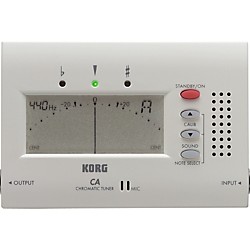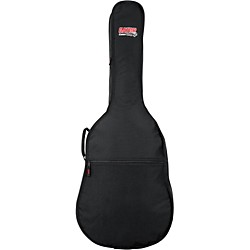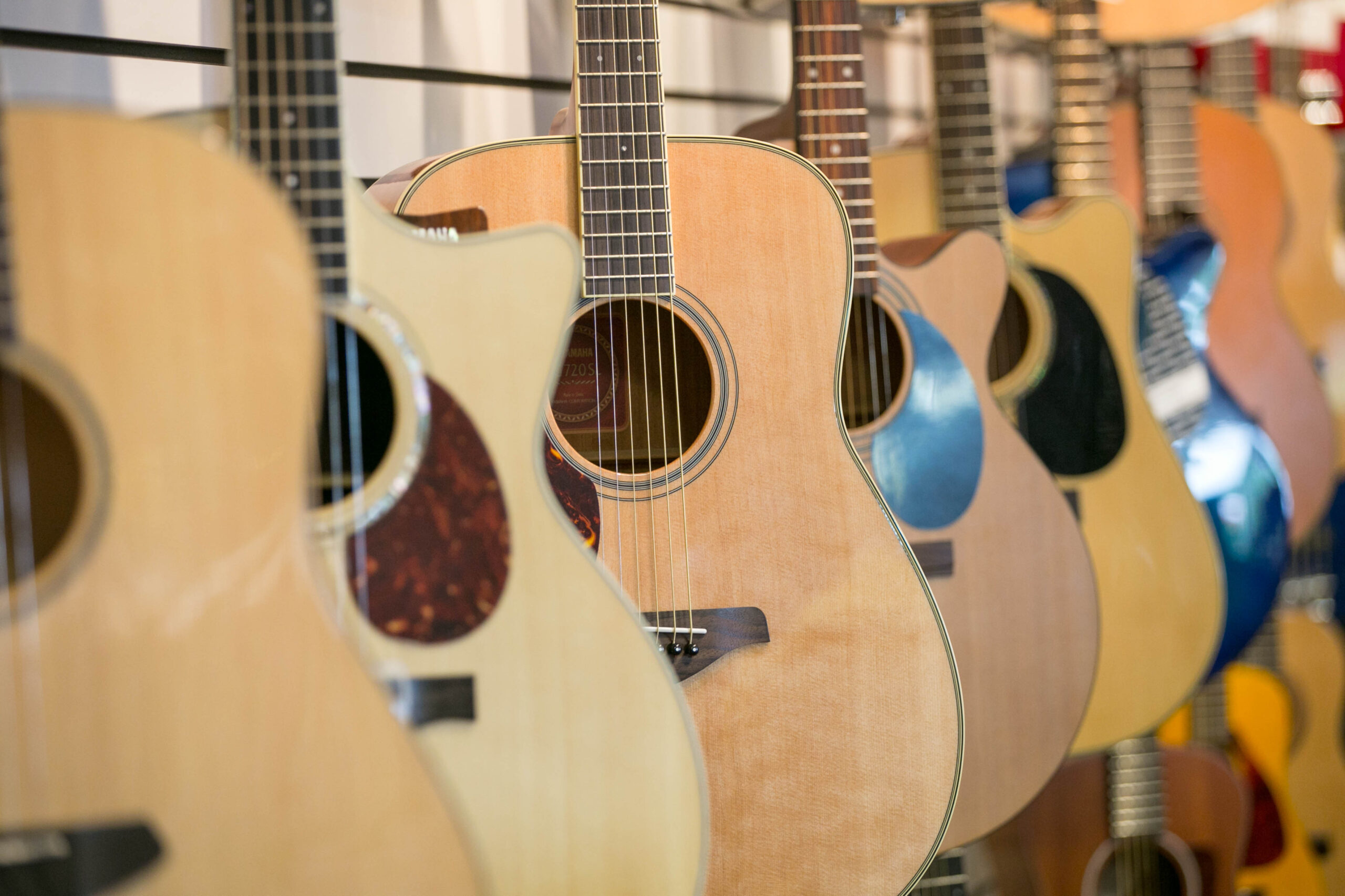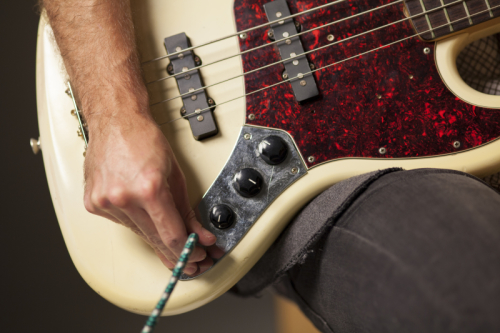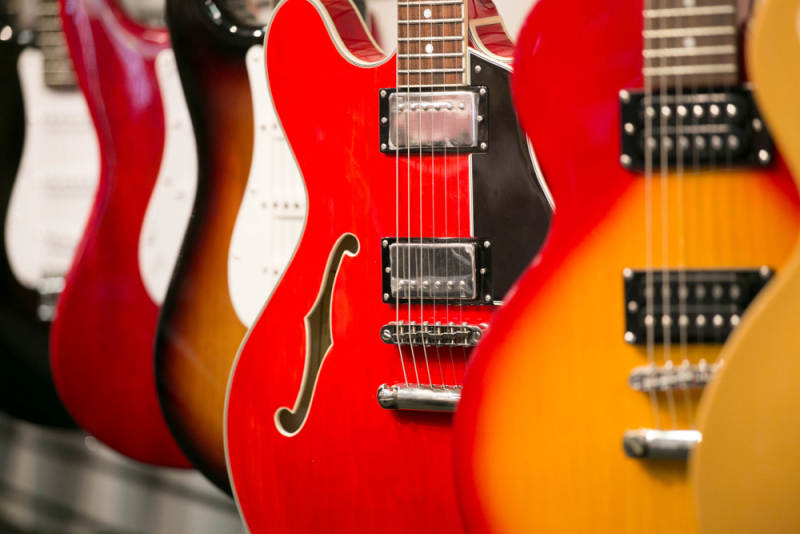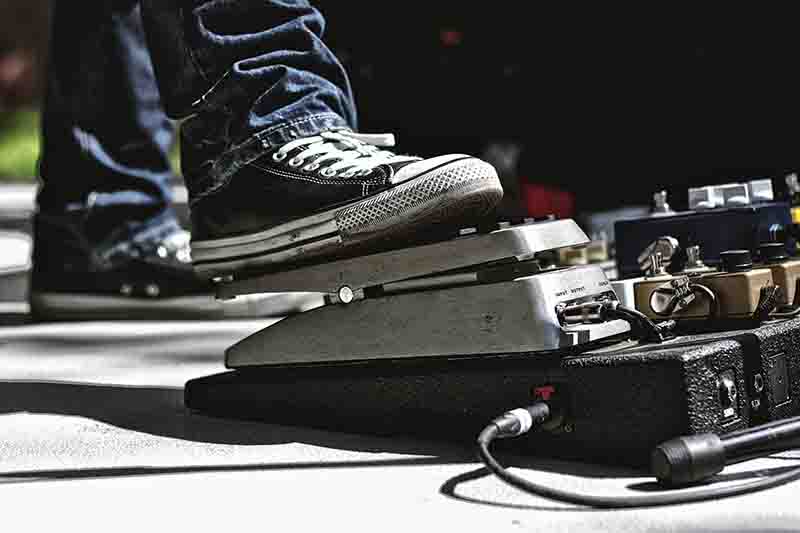April 09, 2015
Helpful Information for Beginner Guitarists


Learning to play the guitar can be a fun and exciting adventure, but becoming comfortable with the instrument can be hard, especially those who are new to the world of music. Whether you’re a brand new guitar player or haven’t picked up the instrument in quite some time, there are a few important things to keep in mind. From setting a practice schedule to preparing for finger callouses, below you’ll find some of our best advice for beginner guitarists. If you’re having a particular issue that isn’t covered on this list, speak with your guitar teacher for advice that’s specific to you and your situation.
Stay in Tune
Staying and playing the guitar in tune may sound like common sense, but most new guitarists don’t know the first thing about tuning. For example, did you know that even the slightest bump of your guitar can cause it to go out of tune? It’s true! For this reason, it’s important to purchase a tuner and learn how to keep your instrument in tune. If you’re using a generic tuner, start with the highest string and gradually work your way to the bottom, using the fine tuners to adjust the pitch along the way. How often your guitar needs to be tuned depends on a variety of things, including how often you play, where you store your guitar, what type of strings you use, and how you transport your instrument. For a general idea of how often you’ll need to tune your guitar, speak with your music instructor.
The Korg CA-40 Electronic Chromatic Tuner has wide range that covers A0 (27.50 Hz) – C8 (4186.01 Hz), you can tune a variety of instruments with the Korg CA-40, including wind, string, and keyboard instruments. The pitch and range are detected quickly and accurately. You can use the built-in high-sensitivity microphone to detect the pitch of an acoustic instrument without the need for any other equipment.
Set a Practice Schedule
If you’ve never really had a set schedule before, it’s time for that to change. Most musicians, especially brand new ones, find that sticking to a consistent practice schedule works the best for them- this way, you know you’ll be getting in at least the minimum amount of practicing time each week. To start, set aside a few days a week where you can practice for at least half an hour. (Note: the practice length and frequency varies from student to student, so speak with your teacher for more information.) Start with some scales and warm-up exercises before moving onto solo work or recital pieces. To make your practice sessions as effective as possible, go into each session with a distinct goal. If you practice with a purpose, you’ll find that your practice time is more enjoyable. Other tips: make sure your practice space is quiet and free from distraction, and practice at a time of day where you’re most alert.
Prepare for Calluses
Chances are, you’ve experienced the annoyance of a callus forming on your hand or foot. Now imagine those calluses on the tips of your fingers. This will happen to you- it’s an inevitable part of playing the guitar. In fact, many guitarists think of it as a rite of passage. Fortunately, there are some tips to make the process a little easier. While the most effective way to build calluses is through some old-fashioned practicing, some guitarists prefer to use numbing agents to help get them through the process. Just soak your fingers in some apple cider vinegar for about 30 seconds before playing and you should be good to go. Once your calluses do form, refrain from biting, picking, or shaving them off- you got this far, why would you want to go back to square one? Finally, light gauge strings are easier to play than medium or heavy gauge strings, so talk to your teacher about potentially making a switch.
Nickels are some of the most popular of the Ernie Ball Slinky guitar strings. The 2223 Nickel Super Slinky is crafted from nickel-plated, steel wire wrapped around a hex-shaped, steel core wire. The plain strings are made of specially tempered, tin-plated high carbon steel, producing a well-balanced tone for your guitar.
Listen to Yourself
Unless you were born with perfect pitch or live with someone who was, you probably won’t be able to honestly evaluate yourself as a musician. This is especially true for brand new guitarists who have never played an instrument before in their life. For this reason, record yourself with a handheld device or your cell phone, and make it a point to incorporate listening to yourself into your practicing time. Don’t be afraid to critique yourself, and always critique yourself honestly. If you follow this process, you’ll be able to actually hear the improvement in your playing over time. To really get a sense for your improvement, save the older recordings and compare them to the most recent ones. If you’re focusing on practicing the right way, there should be a noticeable difference between two months ago and today.
Buy the Right Accessories
When it comes to actually playing the guitar, there are a few essential accessories that’ll make the guitar easier to learn, more fun to play, and less complicated to maintain. The truth is, you don’t need every single toy or accessory available on the market, but you will need to invest in some of the essentials: a spare set of strings, a guitar case, a tuner, and a pick if you think you’ll use one. Plus, you’ll need at least a cleaning cloth to keep your instrument clean and maintained. For a complete list of must-have accessories for guitar players, check out Beyond the Guitar: Strings, Cases, and Other Accessories. If you have questions about any of the items on this list or feel like you may be missing something, ask your music instructor or head to a Music & Arts store for more information.
This durable guitar gig bag for 1/2- and 3/4-sized guitars is constructed with a 600-denier nylon exterior and 420-denier nylon interior with 2/5″ of padding to keep your mini guitar protected. The interior of the GBE-Mini-Acou guitar bag is reinforced at the headstock and bridge to provide extra protection for the parts that need it most.
Give Yourself a Break
At the end of the day, learning how to play the guitar has its ups and downs. There are some days when you won’t be able to concentrate, and others when you absolutely love the instrument and can’t imagine ever giving it up. When you have a bad day, don’t worry about it too much- just pick up your guitar and play through some of your favorite songs instead of sticking to your typical practice schedule. Or, skip practicing that day altogether. Just remember: learning to play the guitar isn’t all sunshine and puppies. There will be days when you’re up, days when you’re down, and lots of days in between. Most importantly, make sure you’re having fun! If you are no longer enjoying the instrument, speak with your instructor. They’ll be able to help you evaluate if the feeling is temporary or if it’s time to try out a new instrument. After all, the guitar isn’t for everyone!




